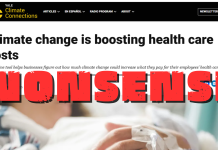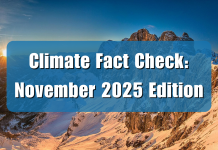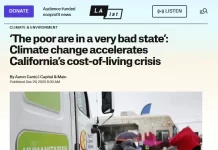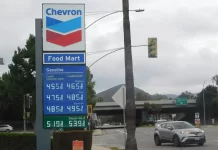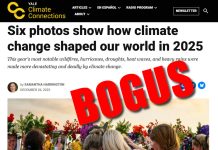Montana Democratic Gov. Steve Bullock signed on July 1, 2019, an executive order creating the Montana Climate Solutions Council. Bullock charged the council with preparing the state for climate change impacts and devising a plan to reach net-zero carbon dioxide (CO2) emissions by 2035. This paper provides Montana-specific climate information to help educate lawmakers so they can craft the best possible climate-related policies on behalf of the people of Montana.
There has been no recent acceleration in Montana’s modest long-term temperature rise. In fact, just the opposite has happened, as Montana temperatures have been dropping significantly in recent years. The National Oceanic and Atmospheric Administration (NOAA) keeps detailed temperature records for Montana and the rest of the nation dating back to 1895. A warming trend in Montana was already underway in 1895, even though this was before the advent of coal-fired power plants and SUVs.
NOAA temperature records show a modest warming trend has occurred in Montana since 1895, at a pace of 0.2 degrees Fahrenheit per decade. (See Figure 4 on p. 10.) Since 2005, when NOAA’s most accurate and advanced temperature-gathering stations became operational in Montana and the rest of the nation, Montana temperatures have been falling at a pace of 0.4 degrees Fahrenheit per decade. (See Figure 5 on p. 10.) It is counterfactual to claim humans are causing a recent increase, or any increase at all, in recent Montana temperatures.
Montana carbon dioxide emissions contribute very little to national and global emissions and virtually nothing to global temperature. Only eight states emit fewer total CO2 emissions than Montana, and Montana produces less than 2 percent of total U.S. CO2 emissions. According to calculations included in the U.S. National Center for Atmospheric Research climate models, immediately eliminating all Montana CO2 emissions would lower expected global temperature by only approximately 0.003 degrees C by the year 2100, an amount too small to be measured or noticed.
Bullock’s executive order claimed that “climate change poses a serious threat to Montana’s natural resources, public health, communities, and economy.” To support this assertion, the executive order cites a publication titled 2017 Montana Climate Assessment (MCA). According to the executive order, the MCA found “annual average temperatures in the state have risen 2 to 3 degrees Fahrenheit since 1950 at approximately double the rate of the nation as a whole, and are projected to increase 4.5 to 6 degrees Fahrenheit by mid-century and 5.6 to 9.8 degrees Fahrenheit by the end of the century.”
MCA grossly distorts facts and evidence to paint an overly alarmist and misleading picture of recent, current, and future climate changes in Montana. This Policy Brief aims to put the Montana climate picture in a more accurate perspective.




